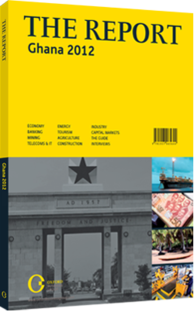Ironbound?: New investment in exploration could spark a return to iron production
Though home to a diverse set of minerals, it has been the soaring price for gold amidst a weak global economy that has brought about significant increases in production, investment, exploration and revenues. However, minerals such as manganese, bauxite and diamonds are also being explored and excavated, and the country could once again rejoin the ranks of the world’s top iron ore producers.
RAW RESOURCES: Ghana has three major iron ore deposits with industrial significance in Oppon Mansi, Pudo and Sheini, according to the Minerals Commission. These deposits are so far unexploited, primarily due to a shortage of developed infrastructure to transfer bulk minerals from deposits to ports. The lack of a fully developed national rail network has also created bottlenecks in the production of other bulk minerals, namely bauxite and manganese.
However, in December 2011 three prospecting licences in Sheini Hills were awarded to Cardero Resources Corporation, a Canadian mining firm specialised in bulk commodity extraction. Through a joint venture with its local partner, Emmaland Resource, Cardero began exploration of the Sheini Hills iron formation in the first half of 2012. According to Cordero, the predominantly hematite formation has an average thickness of 50-150 metres and has been mapped at the surface for at least 30 km of strike.
In August 2012 Cardero released positive drill results from phase 1 drilling of the project, in which three holes were found to have an average thickness of 59.7 metres with a weighted average grade of 38.38% iron, though at least one other section consisting of five holes reported average thickness of 84.88 metres with an average grade of 35% iron. An independent contracting firm, SRK Consulting, is expected to release the initial resource estimate near the end of 2012. The two-year prospecting licences require a minimum investment in exploration of $3.06m per year, though Emmaland’s CEO, Emmanuel Kwesi Ababio, told local press in December 2011 that $4.6bn had already been raised to invest in developing the project once exploration and feasibility studies have been completed.
Covering an area approximately 55 km long and 7 km wide in north-eastern Ghana, Cardero has indicated the area boasts “moderate to good” infrastructure thanks to the availability of graded roads, power and communications available in Zabzugu. Ababio reported that, should the project move into development, some of Cardero’s $4.6bn would be channelled into proprietary infrastructure, such as the construction of a railway line to transport the bulk iron ore to port.
THE IRON PRICE: Iron ore, like gold, saw its price climb steadily after the turn of the millennium as surging demand from emerging giants China and India propelled the market. Recent economic sluggishness, particularly from China, has brought the price of iron down to $112.90 per dry metric tonne (dmt) in August 2012, – its lowest price since 2009 according to the steel index. Increased mining of iron ore, which saw global production reach an all-time high in 2011 of 1.92bn tonnes has also helped in pushing the price of the mineral down. Nevertheless, after trebling to $200/dmt from 2008 to 2011, the price of iron ore is expected to stabilise, comparatively, over the next 10 years. According to the World Bank Development Prospects Group, the price of iron ore will continue to fall to a low $90/dmt in 2017 before recovering back to $115/tonne in 2025. Despite recent price decreases in iron ore, demand for steel is expected to remain steady in the short-term with the World Steel Association having estimated demand growth of 5.6% in 2011 and predicting 4% expansions in 2012-13.
Commodity extraction, however, is a long-term investment. In Ghana mining licences are issued for a maximum of 30 years, and should the Sheini Hills project move forward the government would retain a 10% interest. The initial signs are indeed positive; however until the Sheini formation’s full resource estimate is published later in 2012 it would be premature to state that Ghana is definitely ironbound.
You have reached the limit of premium articles you can view for free.
Choose from the options below to purchase print or digital editions of our Reports. You can also purchase a website subscription giving you unlimited access to all of our Reports online for 12 months.
If you have already purchased this Report or have a website subscription, please login to continue.

